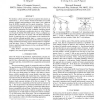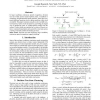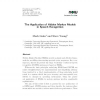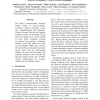127 search results - page 8 / 26 » Advances in Large Vocabulary Continuous Speech Recognition |
ICASSP
2009
IEEE
14 years 2 months ago
2009
IEEE
We introduce a direct model for speech recognition that assumes an unstructured, i.e., flat text output. The flat model allows us to model arbitrary attributes and dependences o...
INTERSPEECH
2010
13 years 2 months ago
2010
In large vocabulary continuous speech recognition, decision trees are widely used to cluster triphone states. In addition to commonly used phonetically based questions, others hav...
FTSIG
2007
13 years 7 months ago
2007
Hidden Markov Models (HMMs) provide a simple and effective framework for modelling time-varying spectral vector sequences. As a consequence, almost all present day large vocabula...
ICMCS
2006
IEEE
14 years 1 months ago
2006
IEEE
In this paper the optimal filter-bank design method based on the Minimum Phone Error (MPE) criteria is investigated. We use Gaussian type filter bank for optimization and variou...
NAACL
2007
13 years 9 months ago
2007
We analyze subword-based language models (LMs) in large-vocabulary continuous speech recognition across four “morphologically rich” languages: Finnish, Estonian, Turkish, and ...




